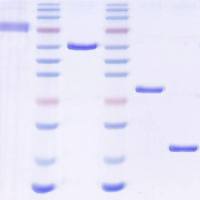Peptide Assay of Protein Kinases and Use of Variant Peptides to Determine Recognition Motifs
互联网
互联网
相关产品推荐

Echinochloa crus-galli Antimicrobial peptides 重组蛋白表达
¥2000

新冠病毒 Omicron (XBB.1.5) variant Spike RBD 酶联免疫试剂盒
¥5000

SIRPA/SIRPA蛋白Recombinant Human Tyrosine-protein phosphatase non-receptor type substrate 1 (SIRPA)重组蛋白Brain Ig-like molecule with tyrosine-based activation motifs蛋白
¥1344

CKS2/CKS2蛋白Recombinant Human Cyclin-dependent kinases regulatory subunit 2 (CKS2)重组蛋白CKS-2蛋白
¥1536

Coronavirus spike重组蛋白|Recombinant SARS-CoV-2 (2019-nCoV) Spike S2-mFc Recombinant Protein
¥4500
相关问答

